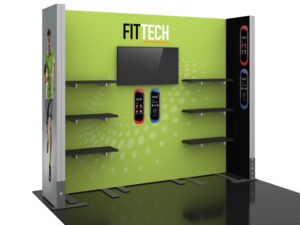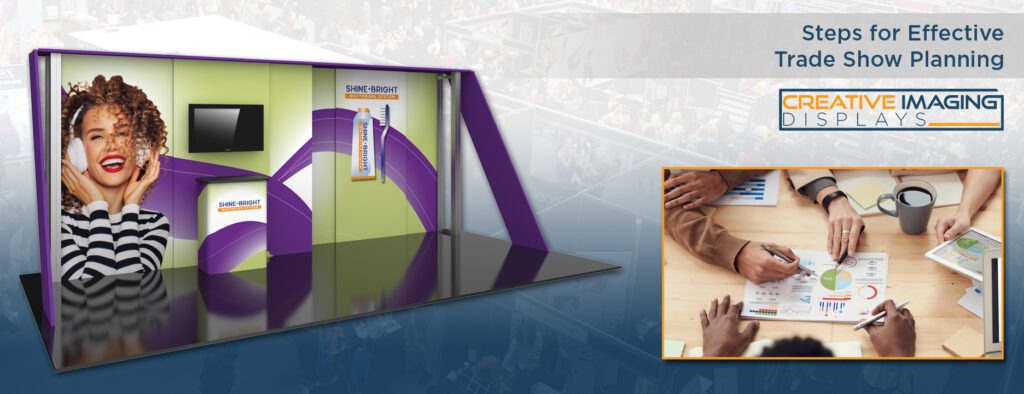Effective trade show planning can be just as important as the show itself. Trade shows are a big undertaking, especially for first time exhibitors. Taking the time to create a plan of action is crucial when developing a trade show strategy. There is a great deal of work that needs to take place before and after shows which are easily forgotten. We have outlined 5 key steps for effective trade show planning in this article to provide insight into strategies that work.
- Find the correct trade show
- Develop a marketing plan
- Plan for the event itself
- Collect data during the show
- Log data to create an updated plan of action
Finding the Right Show
It seems very simple to find the right trade show, but can be a difficult task. There are thousands of trade shows every year and finding the best show(s) is sometimes a shot in the dark. For discussion sake, let’s say a business owner in the construction industry is looking for a trade show to expand their client base. The company specializes in interior finishings. There are hundreds of shows throughout the country every year construction related, but there may only be a few or even one show that can prove to be effective.
A consumer home show could be very valuable, while a construction supply show might be a waste of time. Within each category some shows may offer more attendees, or a higher percentage of qualified buyers. Depending on show cost, it may be beneficial to do all, or only a few particular shows. The best way to narrow down choices is to research online, talk to other exhibitors, and get stats from the show itself. It can be a risk to attend a show without a lot of available data, but sometimes it can pay off in a big way.
Developing a marketing plan
Pre-show marketing is one of the most important steps for a successful show. There are many options available with social networking, webinars, and online presentations that are easy, free, and very effective. Traditional methods such as cold calling, mailers, handouts, and face to face interaction are still proving to be effective methods in many industries. Reaching out to current clients and spreading the word to attendees can create a buzz for the show. As simple as it sounds, a theme can create an interest in the marketing pitch. It can be as simple as a new product, show special, or an award recently received. Marketing plans built around exciting themes will grab the most attention. More can be found about trade show marketing in our company blog!
Planning for the event
This step is more straight forward, but also the most time consuming. This includes reserving the show space, booking travel arrangements, staff planning, arranging the trade show booth, logistical arrangements, and coordinating the event itself. It’s very important to read the entire booklet provided by the show to insure deliveries are made on time and all the rules are followed. Logistics can often create the biggest headache for exhibitors so plan ahead! There are logistics management companies available if logistics become too much to bear. Careful planning and following the show’s guidelines are the key to ensuring the event is seamless.
Collecting Data During the Show
 Once the show starts its usually a non-stop process until the time the show ends. It can be easy to overlook the important task of taking notes and evaluating the show itself. Collecting this data can help to improve future shows, or can indicate if a show is not right for the exhibitor. Some important data to collect is the number of visitors to the booth, the percentage of quality potential buyers, analysis of competitors traffic and booth set up, and comments from attendees visiting the booth. Keeping track of this information is crucial when evaluating the effect of the show on the overall business and return on investment.
Once the show starts its usually a non-stop process until the time the show ends. It can be easy to overlook the important task of taking notes and evaluating the show itself. Collecting this data can help to improve future shows, or can indicate if a show is not right for the exhibitor. Some important data to collect is the number of visitors to the booth, the percentage of quality potential buyers, analysis of competitors traffic and booth set up, and comments from attendees visiting the booth. Keeping track of this information is crucial when evaluating the effect of the show on the overall business and return on investment.
Create an Updated Plan of Action
For first time exhibitors the most crucial aspect of the first show is logging information. This information gathered at a show is incredibly valuable because it will lead to a better show experience. For example, collecting data on attendees comments can help to improve the booth and the show experience. A common question asked by attendees entering a booth is, “What do you guys do?”. If this question is asked multiple times then it would be a good idea to evaluate the booth set up to insure attendees can figure out your service within seconds. This can vastly improve visibility and booth traffic for every trade show. Also taking notes and photos of competitors’ booths can give insight to what is working in the industry. Creating an organized log and note system is one of the most valuable assets that can be attained from a trade show.
Overview
These five points outline some general ideas in regards to trade show planning. These ideas should be adapted to work in specific industries. We encourage exhibitors to use experience and research to create the best overall show experience. We have also provided an info graphic blog post on follow up after the trade show which is a great reference to this article. Always keep in mind that the event industry is always changing and a successful exhibitor is one that pays attention to the trends and stays ahead of the competition! What do you think about these steps for effective trade show planning? Comment below and let us know how you plan for a show!


